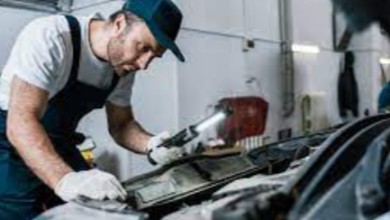Ordering Extra from Heath’s Best Pizza Spots? How to Store It the Right Way

The Science Behind Pizza Preservation
Understanding Moisture Migration
Ever wonder why your leftover pizza sometimes turns into a soggy mess? It all comes down to moisture migration. The water content in the sauce and toppings moves into the crust, making it lose its crispiness. This process is accelerated at room temperature, which is why refrigeration is key.
- The crust acts like a sponge.
- Toppings release moisture over time.
- Warm environments speed up the transfer.
Think of it like this: the pizza is trying to reach equilibrium. The wet parts want to share their moisture with the dry parts. Slowing down this process is the name of the game.
The Role of Temperature in Food Safety
Temperature plays a huge role in keeping your pizza safe to eat. Bacteria love to grow in warm environments, and pizza, with its mix of ingredients, is a perfect breeding ground if left out too long. That’s why knowing how long is pizza good for in the fridge is so important. The general rule is to refrigerate it within two hours of cooking or delivery. This significantly slows down bacterial growth and keeps your pizza safe for a few days.
| Temperature (°F) | Bacterial Growth Rate | Risk Level |
| 40 or below | Slow | Low |
| 40-140 | Rapid | High |
| 140 or above | Slow to None | Low |
Why Air Exposure is the Enemy
Air exposure is another factor that can ruin your leftover pizza. Oxygen can cause the pizza to dry out and become stale. It can also lead to oxidation, which can affect the flavor and texture of the toppings. That’s why airtight storage is so important. Using containers or wrapping your slices tightly can help minimize air exposure and keep your pizza tasting fresher for longer. If you are looking for the best pizza in heath Ohio, you’ll want to make sure you store it correctly to maintain that fresh taste!
Optimal Storage for Leftover Slices
So, you’ve indulged in some of the best pizza in Heath Ohio, and now you’re faced with the delightful problem of leftovers. Don’t let those precious slices go to waste! Proper storage is key to maintaining flavor and texture. Let’s explore the best ways to keep your pizza fresh for later.
Refrigeration Best Practices
Refrigerating pizza is the most common way to store it, and for good reason. It slows down bacterial growth and keeps your pizza safe to eat for a few days. But there’s a right and a wrong way to do it.
- First, let the pizza cool down a bit before refrigerating. Putting hot pizza directly into the fridge can raise the temperature inside, which isn’t ideal.
- Next, wrap the slices individually in plastic wrap or aluminum foil. This helps prevent them from drying out.
- Finally, stack the wrapped slices in an airtight container. This provides an extra layer of protection against moisture and odors in the fridge.
Proper refrigeration is key to maintaining the quality of your leftover pizza.
Freezing for Extended Freshness
Want to keep your pizza around for longer than a few days? Freezing is the answer! It’s a great way to preserve pizza for weeks, even months. Here’s how to do it right:
- Start by wrapping each slice individually in plastic wrap. This prevents freezer burn.
- Then, place the wrapped slices in a freezer-safe bag or container. Squeeze out as much air as possible to minimize ice crystal formation.
- Label the bag with the date so you know how long the pizza has been in the freezer.
Freezing pizza is a great way to extend its shelf life, but it’s important to remember that the texture may change slightly. The crust might not be as crispy after thawing and reheating, but it will still be delicious.
Avoiding Common Storage Mistakes
Even with the best intentions, it’s easy to make mistakes when storing leftover pizza. Here are some common pitfalls to avoid:
- Leaving pizza out at room temperature for too long. The two-hour rule is important here. Don’t let pizza sit out for more than two hours at room temperature, as bacteria can grow rapidly.
- Stacking slices directly on top of each other without wrapping them. This can lead to soggy crusts and stuck-together toppings.
- Using flimsy containers that don’t provide a good seal. Airtight containers are essential for preventing moisture loss and odor absorption.
So, how long is pizza good for in the fridge? Generally, leftover pizza is safe to eat for 3-4 days when stored properly in the refrigerator. If you’re unsure, it’s always best to err on the side of caution and discard it.
Reheating Your Heath Pizza Masterpiece
So, you’ve got leftover pizza from the best pizza in Heath Ohio. Awesome! But cold pizza isn’t always the move. Let’s talk about how to bring those slices back to life. No one wants a soggy, sad excuse for pizza, right? We’ll cover a few methods, from the best to the ‘okay, I’m desperate’ option.
The Oven Method for Crispy Crust
This is generally considered the gold standard. It takes a little longer, but the results are worth it. You get that crispy crust and melty cheese almost like it’s fresh out of the box.
Here’s how to do it:
- Preheat your oven to 350°F (175°C).
- Place the pizza slices on a baking sheet. You can line it with parchment paper if you want, but it’s not totally necessary.
- Bake for about 5-10 minutes, or until the cheese is melted and bubbly and the crust is crispy. Keep an eye on it, because ovens vary.
Reheating pizza in the oven is the best way to restore its original texture and flavor. The dry heat helps to crisp the crust and melt the cheese evenly, avoiding the sogginess that can occur with other methods.
Skillet Reheating for a Chewy Bite
If you’re after a chewy crust, the skillet method is your friend. It’s faster than the oven and gives the crust a nice texture. Plus, it’s super easy.
- Place a slice or two of pizza in a cold skillet (non-stick works best).
- Turn the heat to medium-low.
- Cook for a few minutes until the bottom is crispy and the cheese is melted. You can add a few drops of water to the pan and cover it with a lid for the last minute to help melt the cheese if needed.
Microwave: A Last Resort Option
Okay, let’s be real. The microwave isn’t ideal. It can make the crust soggy and the cheese rubbery. But sometimes, you’re short on time, and that’s okay. If you must microwave, here are a few tips to minimize the damage:
- Place a cup of water in the microwave with the pizza. This helps to add moisture and prevent the crust from drying out too much.
- Microwave in short bursts (20-30 seconds) to avoid overheating.
- Consider placing a paper towel under the pizza to absorb some of the moisture.
Look, it won’t be perfect, but it’ll be warm pizza. And sometimes, that’s all that matters. Just remember, [
Creative Ways to Repurpose Leftover Pizza
Don’t let those leftover slices from the best pizza in Heath Ohio go to waste! There are tons of fun and tasty ways to give them a new life beyond just a cold midnight snack. If you’re wondering how long is pizza good for in the fridge, and you’ve passed that point, these ideas are especially handy. Let’s get creative!
Transforming Slices into Pizza Croutons
This is a super easy way to use up pizza, especially if the crust is getting a little stale. Simply cube your leftover pizza slices and bake them until they’re crispy.
- Cut pizza into small, bite-sized cubes.
- Toss with a little olive oil, garlic powder, and Italian seasoning (optional).
- Bake at 375°F (190°C) for 8-10 minutes, or until golden brown and crunchy.
These pizza croutons are amazing on salads, soups, or even just as a snack!
Pizza Scramble for Breakfast
Who says pizza can’t be breakfast? This pizza scramble is a surprisingly delicious and satisfying way to start your day. It’s also a great way to use up any leftover veggies or meat from your pizza.
- Dice leftover pizza into small pieces.
- Scramble eggs in a pan with a little butter or oil.
- Add the diced pizza to the eggs and cook until heated through.
- Season with salt, pepper, and any other desired spices.
This is a great way to use up leftover pizza, especially if you’re tired of just reheating it. The flavors of the pizza blend really well with the eggs, and it’s a surprisingly filling breakfast.
Deconstructed Pizza Salad
For a lighter option, try deconstructing your leftover pizza into a salad. This is a great way to enjoy the flavors of pizza without all the heavy carbs. Plus, it’s a good way to get some extra veggies in your diet.
- Cut the toppings off the pizza slices.
- Chop the toppings into smaller pieces.
- Toss the toppings with your favorite salad greens.
- Add a drizzle of olive oil and balsamic vinegar, or your favorite salad dressing.
This is a refreshing and flavorful way to enjoy leftover pizza, especially on a hot day.
Food Safety Tips for Heath’s Best Pizza
The Two-Hour Rule Explained
So, you’ve got some leftover slices from the best pizza in Heath Ohio. Awesome! But before you get too comfy, let’s talk food safety. The two-hour rule is super important: perishable foods, like pizza, shouldn’t sit at room temperature for more than two hours. This is because bacteria love to grow in that temperature “danger zone” (between 40°F and 140°F). After two hours, the risk of bacterial growth increases significantly, potentially leading to foodborne illness. Set a timer if you need to! It’s better to be safe than sorry.
Recognizing Spoilage Signs
Okay, so you think your pizza is still good. But how can you really tell? Trust your senses! Here’s what to look (and smell) for:
- Smell: Does it smell sour, off, or just plain weird? That’s a big red flag.
- Appearance: Is the cheese slimy or discolored? Are there any signs of mold (even tiny spots)? Toss it.
- Texture: Is the crust unusually soft or soggy? Does it feel sticky to the touch? Not good.
If you have any doubts, throw it out. Food poisoning is no fun, and it’s definitely not worth risking for a slice of pizza.
Safe Thawing Practices
So, you froze your leftover pizza (good job!). Now, how do you thaw it safely? The best way is to thaw it in the refrigerator. This allows for slow, even thawing and keeps the pizza at a safe temperature. Don’t leave it on the counter at room temperature to thaw! That’s just asking for bacteria to party. Once thawed, use the pizza within a day or two. And remember, never refreeze thawed pizza.
| Thawing Method | Time Required | Safety Level |
| Refrigerator | Several Hours | High |
| Cold Water | 30-60 Minutes | Medium |
| Microwave | Few Minutes | Low |
And to answer the question of how long is pizza good for in the fridge, generally, properly stored pizza is safe to eat for 3-4 days in the refrigerator.
Essential Tools for Pizza Storage
Storing leftover pizza properly isn’t just about keeping it from going bad; it’s about preserving that delicious flavor and texture you loved when you first got it from the best pizza in heath Ohio. Having the right tools on hand can make all the difference. Let’s look at some must-haves for keeping your pizza fresh.
Airtight Containers: Your Best Friend
Airtight containers are a game-changer. They prevent air exposure, which is a major culprit in drying out your pizza. Using an airtight container significantly extends how long is pizza good for in the fridge.
- Keeps moisture in, preventing a dry, cardboard-like crust.
- Prevents odors from other foods in the fridge from seeping into your pizza.
- Stackable containers save space and keep your fridge organized.
Airtight containers are not all created equal. Look for containers with a strong seal and durable construction. Glass or BPA-free plastic options are preferable for food safety.
Aluminum Foil vs. Plastic Wrap
The age-old debate: aluminum foil or plastic wrap? Both have their pros and cons, but neither is ideal for long-term storage. Aluminum foil can protect against light and air to some extent, but it doesn’t create a perfect seal. Plastic wrap can cling tightly, but it’s prone to tearing and doesn’t prevent moisture loss as effectively as an airtight container. Here’s a quick comparison:
| Feature | Aluminum Foil | Plastic Wrap |
| Air Protection | Moderate | Low |
| Moisture Barrier | Moderate | Low |
| Ease of Use | Easy | Moderate |
| Cost | Low | Low |
Pizza Savers and Specialized Bags
Pizza savers, those little plastic tripods that come in pizza boxes, are great for preventing the box from collapsing onto your pizza during delivery, but they aren’t storage solutions. Specialized pizza storage bags or containers, on the other hand, are designed specifically for leftover slices. These often feature adjustable dividers or compartments to keep slices separate and prevent them from sticking together. They’re a worthwhile investment if you frequently have leftover pizza from the best pizza in heath Ohio.
- Adjustable dividers to customize storage.
- Insulated options to maintain temperature during transport.
- Reusable and easy to clean.
Maintaining Flavor and Texture Integrity
Let’s be real, nobody wants leftover pizza that tastes like cardboard. Getting that fresh-out-of-the-box experience the next day is a challenge, but it’s not impossible. It all comes down to how you handle the cooling and storage process. If you’re lucky enough to have leftovers from the best pizza in Heath Ohio, you’ll want to make sure you store it properly.
Preventing Soggy Crusts
Soggy crust is the enemy! It’s the downfall of many a leftover slice. The key is to minimize moisture.
- Cool it down: Let your pizza cool completely before storing it. Warm pizza creates condensation in the container, leading to a soggy crust.
- Paper Towel Trick: Place a paper towel in the container with your pizza. It’ll absorb excess moisture.
- Elevate the Slices: If you’re using a container, try placing the slices on a small rack or crumpled parchment paper to lift them off the bottom.
Keeping Toppings Fresh
Toppings can also suffer if not stored correctly. They can dry out, get slimy, or even affect the flavor of the entire slice.
- Separate Toppings (If Possible): If you have a pizza with lots of loose toppings, consider removing them and storing them separately. This is especially helpful for things like fresh basil or arugula.
- Airtight is Key: Make sure your storage container is truly airtight. This prevents the toppings from drying out and absorbing odors from the fridge.
- Check Before Reheating: Before you reheat, give your toppings a quick check. If anything looks questionable, remove it.
The Impact of Rapid Cooling
How quickly you cool your pizza can actually affect its texture and flavor. Slow cooling can lead to bacterial growth and a less-than-ideal texture.
Cooling pizza rapidly helps to maintain its quality. The faster it cools, the less time bacteria have to grow, and the less likely the crust is to become soggy. Aim to get your pizza into the fridge within a reasonable timeframe, ideally within an hour or two after it’s been cooked. Remember to consider how long is pizza good for in the fridge, and don’t leave it out too long.
Here’s a quick guide:
| Time Out at Room Temp | Potential Impact |
| Less than 2 hours | Minimal impact on quality if stored properly. |
| 2-4 hours | Increased risk of sogginess and bacterial growth. |
| More than 4 hours | Significant risk; discard the pizza. |
Wrapping It Up: Enjoying Your Leftover Pizza
So, there you have it. Keeping your Heath’s Best pizza fresh for later isn’t rocket science, but a few simple steps can make a big difference. Nobody wants soggy crust or weird-tasting cheese. By taking a little extra time to store it right, you’re setting yourself up for another delicious meal. It’s all about making sure that next slice is just as good, or almost as good, as the first. So go ahead, order that extra pie. You’ve got this.





